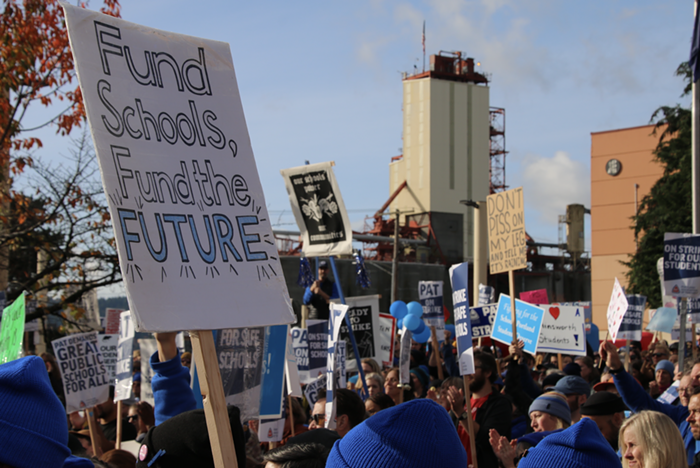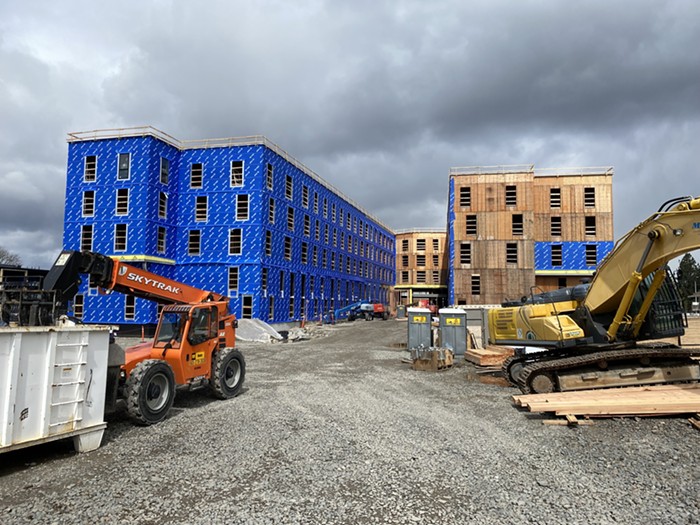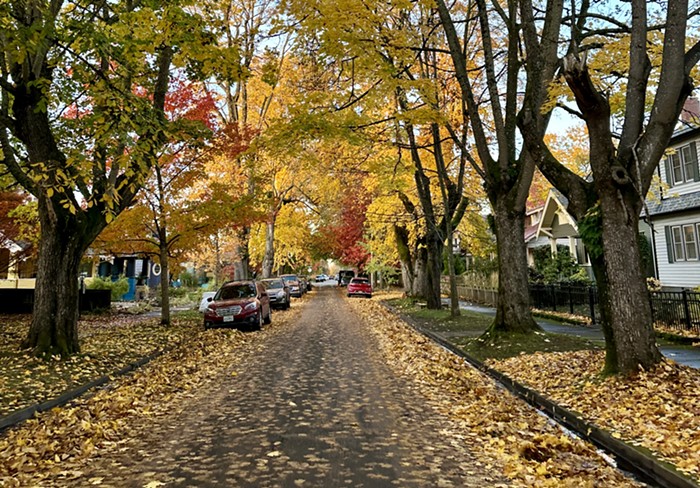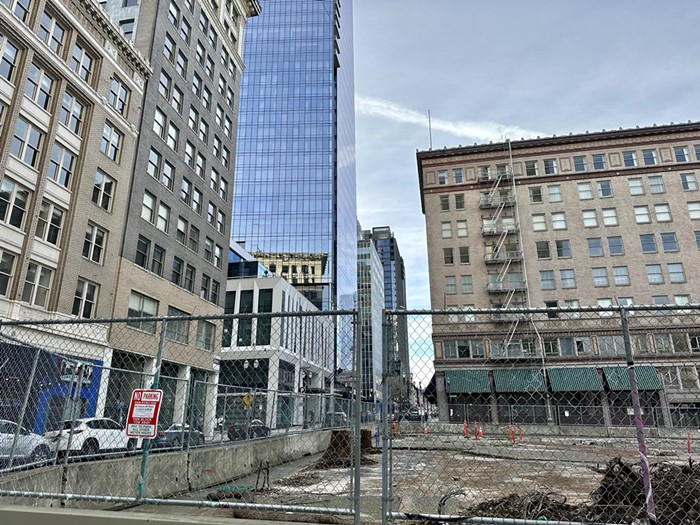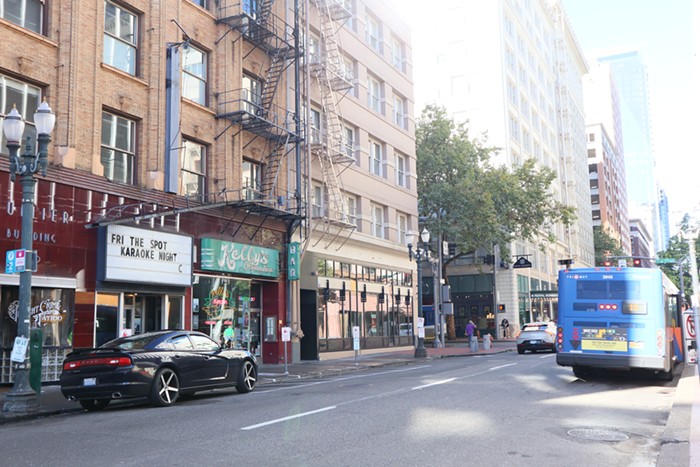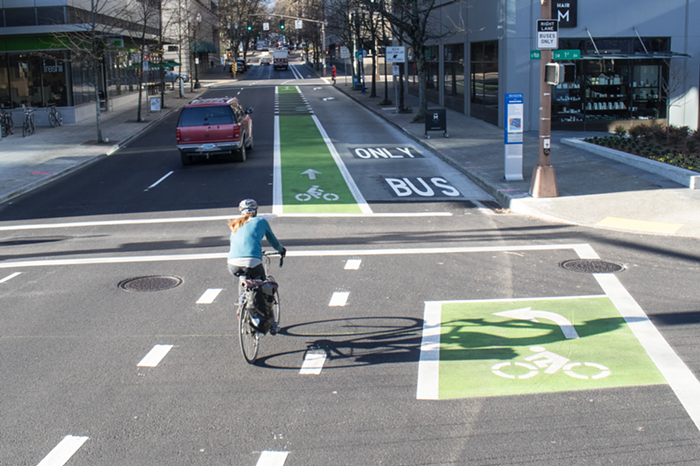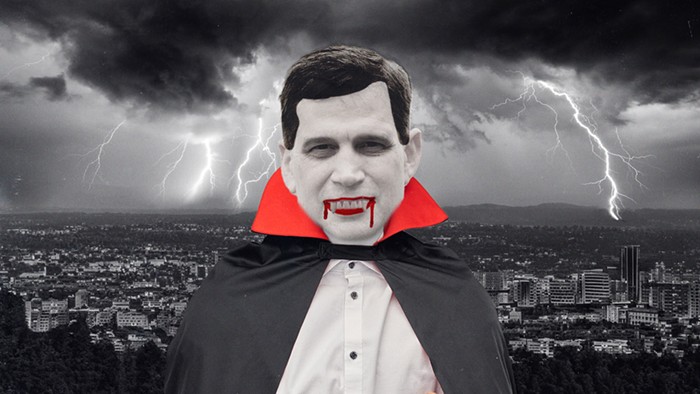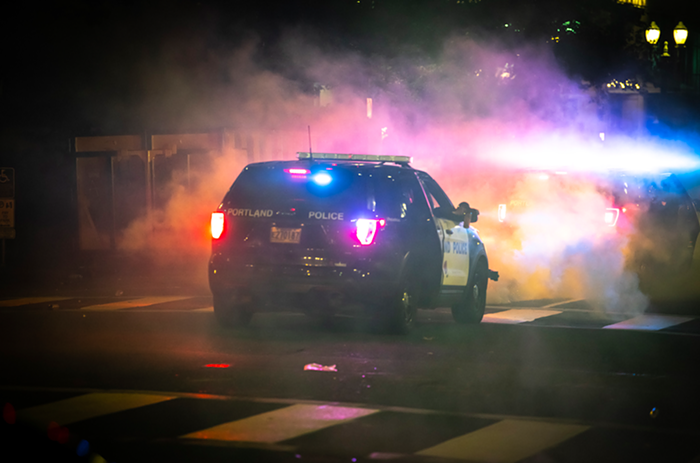
Many major roads in East Portland have dangerously poor lighting compared to the rest of the city, leaving those who use them more susceptible to injuries and fatalities. The Portland Bureau of Transportation (PBOT) is asking for funding in the next budget cycle to address this disparity.
PBOT has identified a “crash network” of major roads throughout the city where the majority of traffic crashes, injuries and fatalities occur. According to a PBOT presentation during a city council budget work session Tuesday, virtually all the high-crash roads west of E 82nd Avenue have adequate street lighting, while only 23 percent of high-crash streets east of 82nd—where many low-income residents and people of color call home—have adequate lighting, according to PBOT’s requested budget. Another way to look at it: Twenty-five miles of high-crash roads east of 82nd Ave. currently lack sufficient lighting.
PBOT estimates that fixing all of East Portland’s street lighting issues would cost the city about $12 million. For this year' budget cycle, the bureau is only asking the city for $500,000 to fix lighting on SE Stark between 148th and 162nd, one of the city's most dangerous stretches.
“We are looking for money to improve street lighting on the most dangerous stretches of road,” said Chris Warner, PBOT's director, at Tuesday's work session. “With better lighting, we can make it safe for pedestrians and bicyclists—those are really two of the most vulnerable groups in our streets.”
In its analysis, the Congressional Budget Office (CBO) recommended that city council consider PBOT’s request, but also noted that it could interfere with a Bureau of Planning and Sustainability project to reduce light pollution in Portland.
This project would further the efforts of PBOT's Vision Zero campaign to reduce traffic injuries and fatalities in Portland. But instead of relying on the $1.5 million in cannabis tax revenue the bureau receives to fund Vision Zero, PBOT is asking for the one-time expense to be covered by the city's general fund.
At Tuesday’s meeting, Commissioner Amanda Fritz questioned why PBOT needs to request money from the city’s general fund for this project, rather than prioritize it as part of the bureau’s regular $223 million discretionary budget, or as part of the Vision Zero cannabis revenue budget.
“Why not prioritize from your existing money, since people are dying and there’s only street lights on one side of the street?” Fritz asked Warner.
Warner answered that in order to pay for the street light project using its own budget, PBOT would have to cut funding from another project.
Mayor Ted Wheeler will release his proposed city budget in May. City council budget work sessions will continue through the next several weeks.

